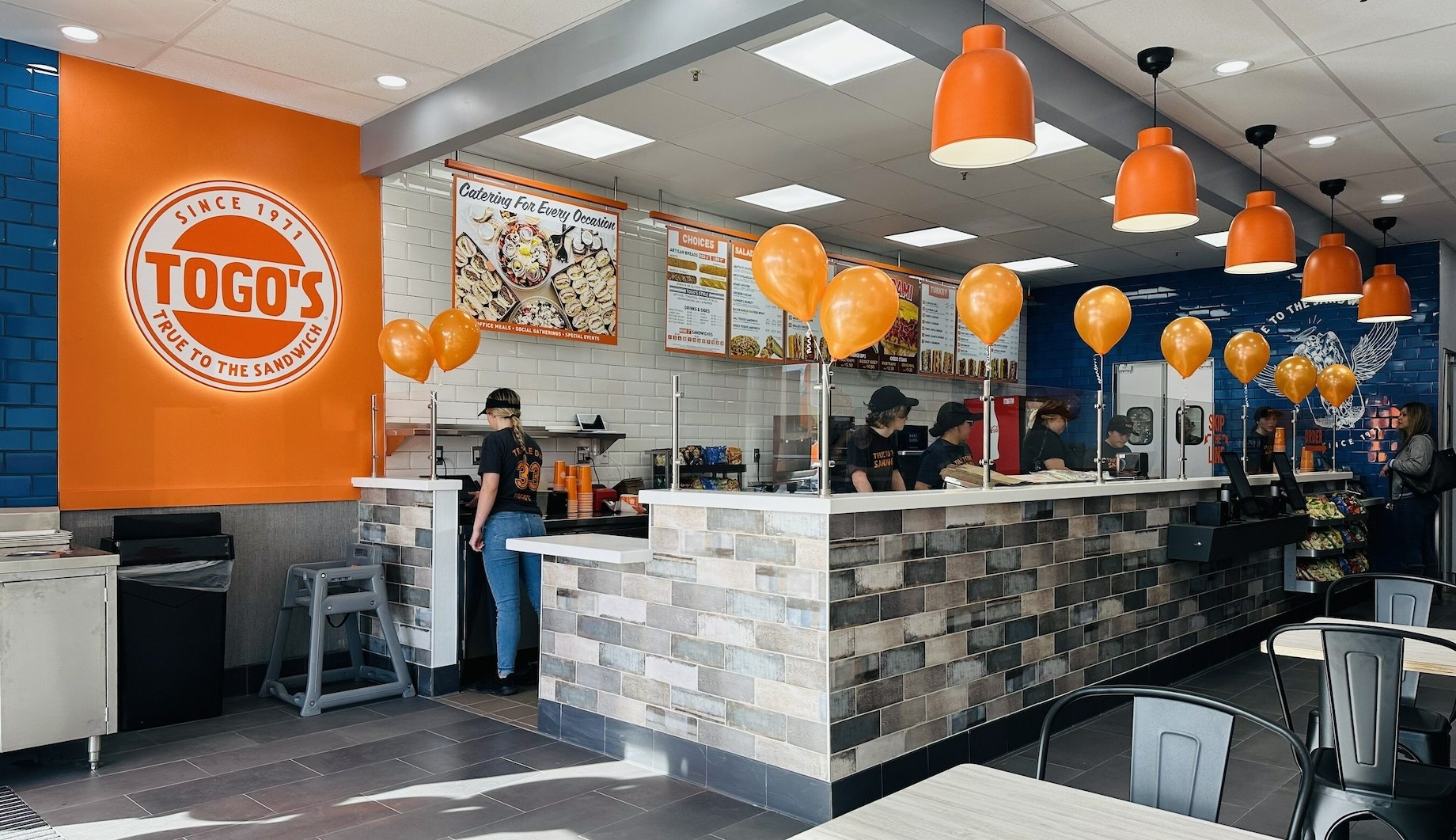U.S. retail property sector fundamentals were healthy in the second quarter, marked by strong foot traffic, high tenant demand, robust rent growth and record occupancy rates. Even so, challenges remain. The pace of new construction is slowing as investors and developers wait for interest rate cuts. Meanwhile, potential retailer mergers and bankruptcies could shift the landscape entirely. The below trends stood out once second-quarter results had settled in.
Smaller Spaces Are Attracting Big Interest
Second-quarter leasing activity focused on spaces under 2,500 square feet, fueled by quick-service restaurants and personal services tenants, according to Colliers Retail Services national research manager Nicole Larson.

Quick-service restaurant operators like sandwich brand Togo’s are filling smaller spaces. It’s fitting for a sandwich chain that, according to its website, started in a San Jose, California, shack that fit only four people. It now has 180 stores open or under development in the West.
Even retailers with large prototypes are slimming down to squeeze into compact locations in target markets using a “smaller-yet-smarter” model, according to Moody’s. Lower rental expenses, fewer employees and tighter inventory can boost profit margins for these chains. The trend gives landlords more options quickly to backfill smaller anchor boxes emptied by bankruptcies.
The Time to Fill a Vacancy Is the Lowest in Decades
Landlords are backfilling spaces at high velocity, according to Brandon Svec, national director of retail analytics at CoStar. Excluding malls, more than 80% of retail spaces listed during the past year were leased within six months of becoming available, while 98% were leased within nine months, he wrote. Nearly half of all retail spaces outside malls have found tenants within three months of listing during the past year. Over the past decade, that threshold took nine months, he added.
Foot Traffic Continues to Grow
Retail visits rose 4.2% year over year in the second quarter, according to Placer.ai. Discount and dollar stores grew the most, 11.2%, while visits to grocery stores increased 7.6%. Aldi led the grocery segment with a whopping 26.7% increase in visits. The reason could be two-fold. Aldi opened 109 stores in the U.S. in 2023, according to JLL’s Grocery Report 2024, providing more stores for consumers to visit by June 2024. Additionally, as a discount grocer, Aldi likely follows the same economic path as dollar stores like Dollar General, about which Placer.ai wrote: “Some of this growth can be attributed to the continued expansion of segment leaders like Dollar General. But the category has also been bolstered by the emphasis consumers continue to place on value in the face of still-high prices and economic uncertainty.”
Meanwhile, visits to fitness centers rose 6% and visits to superstores like BJ’s, Costco, Sam’s Club, Target and Walmart increased 4.6%. Consumers made more trips to home improvement and furnishings chains, too. Visits to such operators as Ace, Harbor Freight, The Home Depot, Lowe’s and Menards rose 1.1%. Restaurant traffic grew 2.6%. The fast-casual segment, which includes companies like Cava and Chipotle, outperformed, as visits increased 3.9%.
Few New Developments Are Underway Still
About 50.4 million square feet of retail space was under construction in the U.S. during the second quarter, and 6.5 million square feet opened during the period, according to Colliers. Texas will house much of it, as the state hosts three of the five U.S. markets with the most retail space underway. Developers focused on build-to-suits, grocery-anchored centers and smaller retail formats within mixed-use projects during the quarter, Larson wrote. Moody’s expects retail construction will remain subdued for the remainder of the year.
MORE FROM C+CT: Activity is focused on redevelopment.
Rents Are Still Rising, but Growth Will Decelerate
Overall average retail asking rents rose 0.3% from the first quarter to the second, reaching $34.12 per square foot, according to Colliers. Rents aren’t likely to keep rising at this rate across the board, but they probably will continue climbing for smaller spaces along primary corridors, Larson wrote. The average rent per square foot for malls was $45.92, up 0.4% from the first quarter. Meanwhile, the average rent per square foot for open-air centers climbed 0.7% from the first quarter to $33.61.
Demand for Space Is High but Could Be Cooling
Tenants absorbed 1.4 million square feet of U.S. retail space in the second quarter, according to Cushman & Wakefield, and they likely would have taken more if suitable space was available, according to senior economist James Bohnaker. “For the first time in years, the retail market is at a point of being supply constrained, at least for space in quality shopping centers,” he wrote. The national retail vacancy rate held steady at 5.3%, the lowest in the past two decades, according to the firm.
But the party won’t last forever, Bohnaker warned. Despite the second quarter’s positive absorption, retail demand for the entire first half of the year was 91% lower than the same period in 2023. “It’s safe to say that occupier sentiment is cooling,” he wrote. Annual retail absorption peaked at 39 million square feet in 2022, declined to 18.9 million square feet in 2023 and totaled 834,000 square feet through the end of the second quarter. At that pace, 2024 would become the weakest year since 2020, he wrote. Meanwhile, rising occupancy costs will restrain some retailers’ plans to grow, and additional retailer bankruptcies and mergers could occur, he added.
U.S. Consumers Showed Resilience in June
Retail and food services sales minus auto and gas increased 0.8% month over month and 3.8% year over year in June, according to the U.S. Census Bureau. “Most store categories showed an increase in spending, which is a sign of stable economic growth and resiliency among consumers, who continue to get some help as inflation slows,” said ICSC research manager Matthew Panfel. The biggest May-to-June gains occurred at nonstore retailers, building supply stores, health and personal care stores, clothing stores and furniture and home furnishings stores. Sales at stores in the sporting goods, hobby, book and music category declined from May to June.
Retail CMBS Delinquency Climbed in June
More retail property owners are falling behind on their commercial mortgage-backed securities loan payments, according to Trepp. The retail CMBS delinquency rate rose to 6.42% in June, up 48 basis points from May. The overall CMBS delinquency rate hit 5.35%, up 38 basis points. The net increase in delinquent loans in June across the five major property types was $2 billion, office accounting for half, retail for 27% and multifamily for 20%. The four largest retail loans that became delinquent in June were malls, each of which had a balance greater than $100 million remaining.
Cullinan Properties Hires Chief Investment Officer
Cullinan Properties appointed David Schreiber chief investment officer. Schreiber previously co-founded and served as managing partner in private equity firm AneVista. Before that, he was retail sector lead and managing director of acquisitions for LaSalle.

David Schreiber
By Brannon Boswell
Executive Editor, Commerce + Communities Today